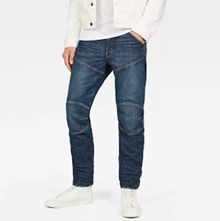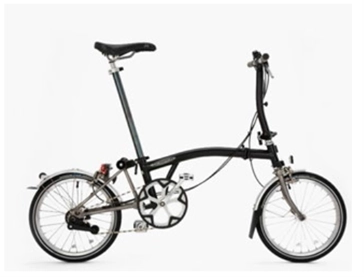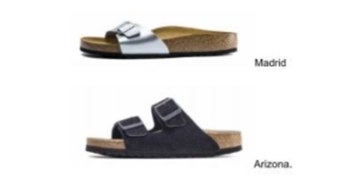
The evolution of copyright law relating to 3D articles


Recent key judgments in the EU and the UK reveal a diverging approach as to whether a 3D article can attract copyright protection. While certain corners of Europe appear to be embracing a lower threshold for copyright protection for 3D articles, this trend is not mirrored across the channel in the UK.
The November 2024 decision of the Intellectual Property Enterprise Court in WaterRower v Liking [2024] EWHC 2806 (IPEC) and the recent February 2025 decision by the German Federal Court of Justice (the BGH) in the Birkenstock case (BGH I ZR 16/24, I ZR 17/24, I ZR 18/24), highlight the tension between the objective of broader protection for creative output against the need to guard against stifling competition which is essential for innovation.
The position in the EU
In the EU, copyright law has embraced a lower threshold for protection for 3D articles when compared to the UK. The 2019 Cofemel (C-683/17) and the 2020 Brompton Bicycle (C-833/18) decisions encapsulate the approach of the EU courts in determining when copyright protection should arise.
Cofemel was a landmark decision in which the Court of Justice of the European Union (the CJEU) reiterated that under EU law, the requirement for the existence of copyright protection in a design is that of 'originality', in the sense that it is an 'intellectual creation' of the author which is identifiable with sufficient precision and objectivity. This means that the design must reflect the personality of the author who has adopted 'free and creative choices' in a design. The work does not however need to have any artistic or aesthetic quality.
In principle, this meant that even simple designs for garments such as hoodies and jeans (being those considered in the case referred to the ECJ in Cofemel) could be protected by copyright.

In Brompton Bicycle,the claimant argued that the shape of its bicycle could be protected by copyright as a work of artistic craftsmanship. The CJEU ruled that the design of the bicycle, despite its functionality, could be protected by copyright if it amounted to an 'original' work. The judgment reaffirmed that as the overall design had been arrived at by free and creative choices, this originality could override the fact that features of the design were dictated by their technical purpose. This decision paved the way for more expansive copyright protection for designs, including functional products.

The February 2025 decision in Société Hermes International and S.A.S. Hermes Sellier v S.A.S. BLAO & Co N° RG 22/09210 relating to the design of the Hermès Birkin bag similarly demonstrated the inclination of the French court to provide broader protection for 3D designs. Despite the Birkin bag having clear functional elements, it was held that other components of the handbag meant that the design arose from the free and creative choices of the designer and so attracted copyright protection.
The position in the UK
In contrast, the judgment in the 2024 UK WaterRower case explored the requirements for 3D articles to comprise works of artistic craftsmanship before they can attract copyright protection.

The court held that the titular rowing machine did not meet the strict requirements of a 'work of artistic craftsmanship' under s.4(1)(c) of the Copyright, Designs and Patents Act 1988 (the CDPA). Under the CDPA, copyright protection for 3D objects arises only for artistic works that fall within a narrow set of closed categories provided for in section 4(1) of the CDPA, as follows:
- a graphic work, photograph, sculpture or collage, irrespective of artistic quality
- a work of architecture being a building or a model for a building, or
- a work of artistic craftsmanship
Only for the last category is an artistic intention or quality required. Accordingly, to be a work of artistic craftsmanship under UK law a work must involve some form of craftsmanship and be something artistic. Designs whose creation is driven chiefly by concerns over practicality and usefulness will not meet this requirement, even if created by highly skilled craftspeople. This is in contrast to the two conditions of originality and identifiability set down in the Cofemel judgment.
The judgment in WaterRower underlines that UK assimilated law (the EU law retained after the withdrawal by the UK from the EU) and EU law are incompatible on this issue. The 'Marleasing principle' of interpreting national legislation in line with the purpose of any EU legislation it was intended to implement is difficult to reconcile in the circumstances.
Why the divergence matters
The divergence is important because of the length of copyright protection. Designs protected by copyright are protected (under UK law) for the life of the author plus 70 years. This is a very long time for potentially simple 3D designs or 3D designs having a number of aspects of functionality to be protected because they meet the lower test of originality under EU law. Under UK law, registered and unregistered design rights (which more typically protect functional designs) give rise to a maximum of 25 years protection only.
The risk for designers and industries dealing in fast moving consumer goods is that they could be accused of copying an earlier design and infringing copyright because of similarities shared with the later designs over a hundred years after the earlier design appeared in the public domain, even if features of the earlier design are not unique or do not have any particular aesthetic qualities. The threshold for the earlier design attracting copyright protection under EU law has arguably become too low.
The ongoing tension between the two approaches, now even in the EU
The UK approach of a more stringent test for copyright protection was recently mirrored in Germany, when the BGH ruled that Birkenstock sandals are not 'works of art' capable of copyright protection.
The judge held that it was Birkenstock's responsibility to establish that its designs went beyond a 'technical solution' and instead focused on the artistic and creative element of the design (which the designs below did not).

The latest UK claim considering the issue
In the UK, the two diverging approaches will likely be re-examined in the PI-Design AG v Shein Distribution UK Limited case (HP-2025-000003) which was filed with the High Court on 9 January 2025 and concerns the designs for Bodum's iconic Pavina glasses and Chambord cafetiere.
Bodum alleges that Shein has copied its designs and sold them to the public.

Bodum advances its claim on the basis that craftsmen produced the above glass designs by hand-blowing and using moulds, resulting in textures and patterning which adds to the aesthetic effect of the glasses. The cafetiere design is contended to have been handcrafted by highly skilled metalworkers using sophisticated techniques, having been first designed in the early 1960s. The designs are all described as being works of artistic craftsmanship under section 4 of the CDPA, being aesthetically appealing and embodying substantial craftsmanship and artistry.
The claim is also particularised by reference to the Pavina glass comprising the intellectual creation of their authors, reflecting their free and creative choices and being identifiable with precision and objectivity, thus being original. Bodum appears therefore to be seeking to meet the requirements of both the UK and EU tests for copyright protection for 3D articles.
Shein is defending the claim on the basis that the shapes of the Pavina glasses are commonplace and have not been copied by Shein. It argues that the designs do not have sufficient originality to give rise to copyright protection, in that a higher standard of originality and creativity is necessary for a functional item such as a drinking glass or coffee press.
The outcome of this judgment is keenly awaited as further clarification of the UK approach to the issue will bring further certainty to designers and competitors selling products with a similar look and feel. As the UK navigates post-Brexit legal disputes, copyright protection in design and fashion remains an area of significant legal development and one for the industry to closely monitor.
Please get in contact with our IP lawyers, expert patent solicitors, or specialist design rights lawyers if you would like guidance or support on any matters referenced in this article.

























